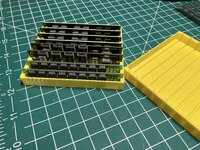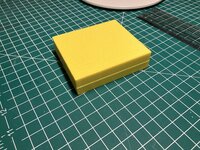What makes an anti-static bag anti-static?
Most of the bags sold as being "anti-static" are mostly made of polyethylene or polypropylene, but they also have other ingredients that contribute to their being anti-static, thereby protecting sensitive electronics inside. Those kind of bags are special in that they won't hold a charge. For example, if you rub your hand or your hair on a balloon and then touch something, you'll feel a zap of static discharge, but rubbing your hand on an anti-static bag won't do the same.
But here's the crux. Many people don't realize that the thru-hole components (with needle sharp spikes on the solder side) often penetrate the bags, creating tiny holes, thereby reducing or eliminating the protection of the bag itself. That is why I personally put a sheet of very thin cardboard under my motherboards or cards, on the solder side, to better ensure nothing will penetrate.
Also note that there are the pink kind of anti-static bags, and you also have the semi-transparent kind with black markings, which don't have any silver tone to them. Those don't offer any shielding from EM fields. So if you want protection from static and EM, you need the silver bags. The silver ones are SHIELDED.
Is being anti-static only a concern for bags and not boxes?
If you have any kind of electronics sensitive to static discharge, and if you really want to protect that from static damage, then of course having a "box" or similar enclosure with anti-static properties will be important.
More specifically, in regards to my previous post, I was talking about 100% transparent 8001 Resin (mainly so you'd know what's inside). Transparent Resin obviously has no EM shielding capability at all. It is an "insulator," not something that "dissipates" a static charge. And while there are some 3D printable filaments which have SPECIAL INGREDIENTS to be anti-static (such as what
@pff000 mentions), the clear Resin I spoke is no designed to dissipate a static charge.
So what would happen to an 8001 Transparent RAM SIMM box filled with SIMMs inside when you hold the box and then walk around on a carpeted floor while rubbing a balloon on your hair (a pretty worst case scenario)? The static charge likely wouldn't be able to make its way through the walls of the transparent box, although there will be a seam in the middle where top and bottom meet each other. That seam is an unknown. But the greater potential problem is that because the box is an insulator, it won't
dissipate a charge, and so a charge might build on the outside of the box when you are talking it across that carpeted floor; and if you arrive at your workbench and then immediately open it and touch the RAM SIMMs
without a grounded wrist strap, you have the potential to zap the SIMMs.
So does this mean it would be prudent to 3D-print a SIMM box in a dissipative plastic such as what
@pff000 mentions? Sure! If and only if you have a printer, which I personally do not. I have to rely on JLC, which does NOT offer anti-static plastics. :-(
What I really need are slotted anti-static bags. I have a few but not enough. Each "slot" can accept a single SIMM, and they are nice and compact as a result. The only bags sold on Amazon are much larger than the SIMM itself and to save space you are inclined to put more than one SIMM inside. But when doing that, you risk the PCBs rubbing against each other and potentially causing damage, especially if you move the bags around a lot. That's why slotted bags made for SIMMs (which used to be easy to find back in the day, but currently no longer) are really ideal. But because I can't find the slotted bags, I eventually was led to this thread where my brain began to ponder slotted SIMM "boxes" instead.



